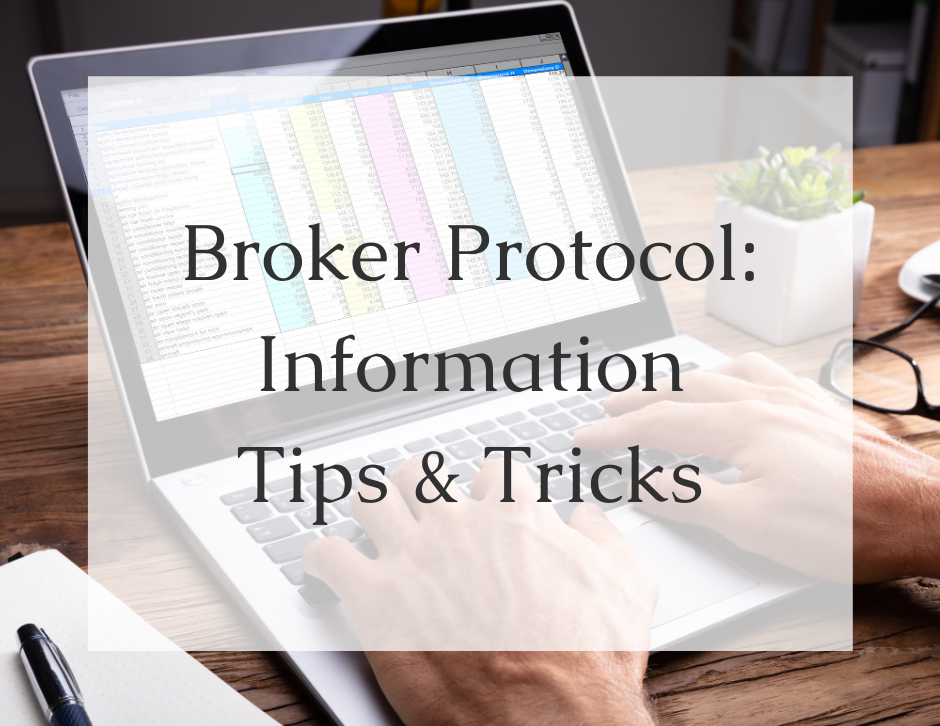Broker Protocol is a touchy subject these days. Are they in? Are they out? There’s a lot of trepidation about the topic. After all, the Protocol itself states that any party may withdraw at any time.
As a transition consultant, one of the most common questions I get about Protocol is “What information can I bring with me?”.
My first suggestion is to read the Broker Protocol. You’d be surprised by how many advisors have not read it. Most just assume they know the gist and rely on their accepting institution to provide the details.
I’ve read it numerous times and I still pick up little things here and there. It’s written by attorneys, so it’s quite thorough. Still, I find many passages that seem to be open for interpretation. I suppose everything is.
In this article, I want to focus on “the Client Information”. The following information can be taken with you upon departure from a Protocol firm: client name, address, phone number, email address, and account title.
Seems easy enough, right? In some respects, it is. However, there are rules about what is considered your client information. Also, there are ways to format the client information to provide a greater likelihood of success with your transition.
- Client Name. While this may seem straight forward, it is most certainly not. Account opening and transfers are botched all the time over name discrepancies. It’s not enough to just list the name on the account. You want to include the client’s full legal name. Prefixes, suffixes, middle initial (if not full middle name), and any aliases. Use the correct legal information, then worry about how the client would like it to read. Some custodians require additional internal paperwork or outside supporting documentation. Make sure you know what that is so you can ask the client for it up front and avoid having to return to that same client for additional items.
- Address. It goes without saying, make sure the address you record is correct. If there is more than one address listed for the client, include all of them. I read nothing in the Broker Protocol that says you can only have one item per category. If your client has a mailing address, bring it. Don’t forget their legal street address. That’s the one you need in order to open an account.
- Phone Number. Bring them all. Cell phone, home phone, work phone. In this high-tech world, the cell phone is the most important number to have, because it is linked to the accounts for anything requiring an electronic signature. Two clients in the household? Make sure you have both cell phone numbers, and make sure they are correct.
- Email Address. At the expense of being repetitive, follow the same guidelines as above. Make sure the email address is correct. Any documents you want to send for electronic signature will need to go to a client’s email address. Take time to eliminate addresses that are no longer in use, and make sure each listed client has one.
- Account Titles. This is an important one. Depending on the number of lines and number of characters allowed per line, account titles on statements could end up looking very different than what the actual registration of the account is. You want to focus on the registration of the account, because it is going to have the most information available to you. Example: You may pull a list of account titles and see that you have an account called “The Smith Family Trust”. That might be the name you gave the account, but it is not the full registration. The full registration would read more like “Jonathon F. Smith Ttee, Jane L. Smith Ttee, The Smith Family Irrevocable Trust DTD 1/1/99 FBO James K. Smith”. The account nickname shows me I have a trust. The account registration shows me I have an irrevocable trust with two trustees, a beneficiary, and a date. Big difference.
Most accepting custodians have their own spreadsheet that they will provide to you. While it is likely very thorough, it will also include many columns that won’t apply to your situation. I suggest you create your own spreadsheet first. Keep one copy for you and print another copy to give to the Branch Manager of your current firm when you resign. That copy will include account numbers. Yours will not. Use your spreadsheet to complete the one provided by your custodian. Follow their instructions as closely as possible. They will not be able to accept the information from you until you resign from your current firm, so they cannot point out mistakes prior to you leaving. After resignation it’s a race against the clock for them to scrub the list, generate the proper paperwork, and send it to you.
Use your spreadsheet as a lifeline. Add additional columns. Keep track of conversations and status of transfers. That spreadsheet will be the most important tool you have.
Aren’t sure where to start? Check out some resources here and get a “Protocol Spreadsheet Template”.
Best of luck!



